

Ben Zachariah
Video: Off-road battle for Beer O’Clock Hill has automakers scrambling
6 Hours Ago
The Mitsubishi Eclipse Cross Exceed is the fully loaded version of the non-PHEV range. It now comes with more standard equipment.

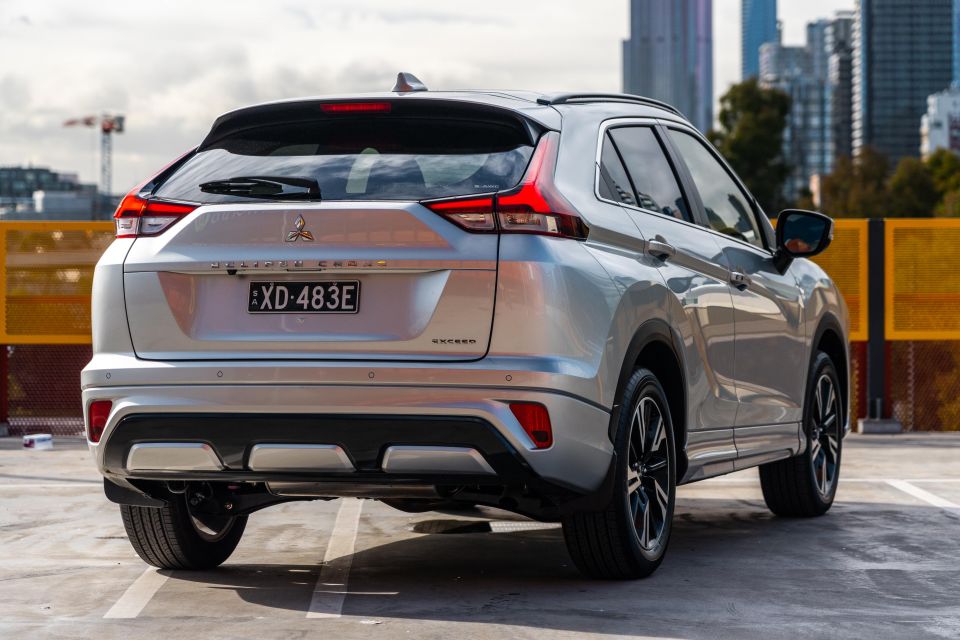

Quickly see how this car stacks up against its competition. Select any benchmark to see more details.
Where expert car reviews meet expert car buying – CarExpert gives you trusted advice, personalised service and real savings on your next new car.
The Mitsubishi Eclipse Cross is getting on in years now, but it’s still soldiering ahead in Australia with a few nips and tucks.

Originally revealed in 2017 and facelifted in 2020, this small SUV from the Japanese carmaker slots in between the venerable ASX and newer Outlander in the local line-up.
Earlier this year the majority of the Eclipse Cross range received more standard equipment in return for a slightly higher asking price.
The top-spec Eclipse Cross Exceed on test here now receives a hands-free power tailgate as standard, as well as a USB-C and USB-A outlet on the rear of the centre console. There’s also the option of a light grey interior, though our tester came with the regular black interior.
It’s worth pointing out this particular Eclipse Cross isn’t fitted with the company’s sophisticated plug-in hybrid (PHEV) powertrain, and instead is powered by a conventional four-cylinder turbo-petrol engine.
Is this the sweet spot of the Eclipse Cross range? Read on to find out.
The 2024 Mitsubishi Eclipse Cross range currently starts at $31,490 before on-roads for the entry-level ES.
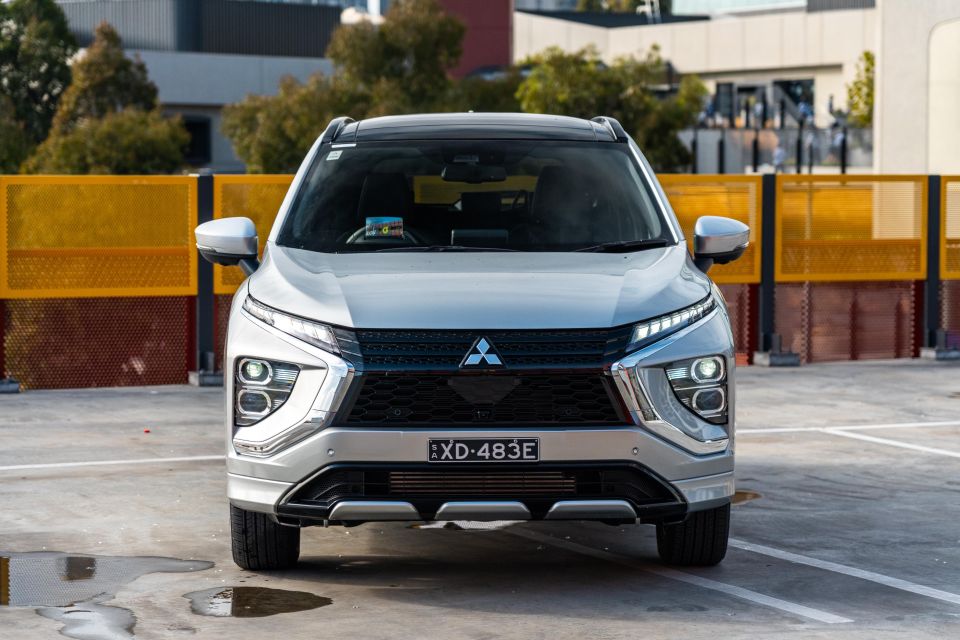
On test here is the top-specification non-plug-in hybrid Exceed AWD variant which is priced from $42,990 before on-roads. It was also finished in Sterling Silver metallic which costs an additional $740.
All up our tester was $43,730 before on-road costs, or $48,440 drive-away for Victorian private buyers (each state has slightly different taxes).
In terms of similarly priced small SUV rivals, you’re absolutely spoilt for choice.
Key rivals include:
Although the Eclipse Cross is technically a small SUV according to the VFACTS database, it’s also priced similarly to a number of segment-straddling mid-sized SUVs like the Chery Tiggo 7 Pro Ultimate AWD ($45,990 D/A) and the Honda ZR-V VTi LX ($48,500 D/A).
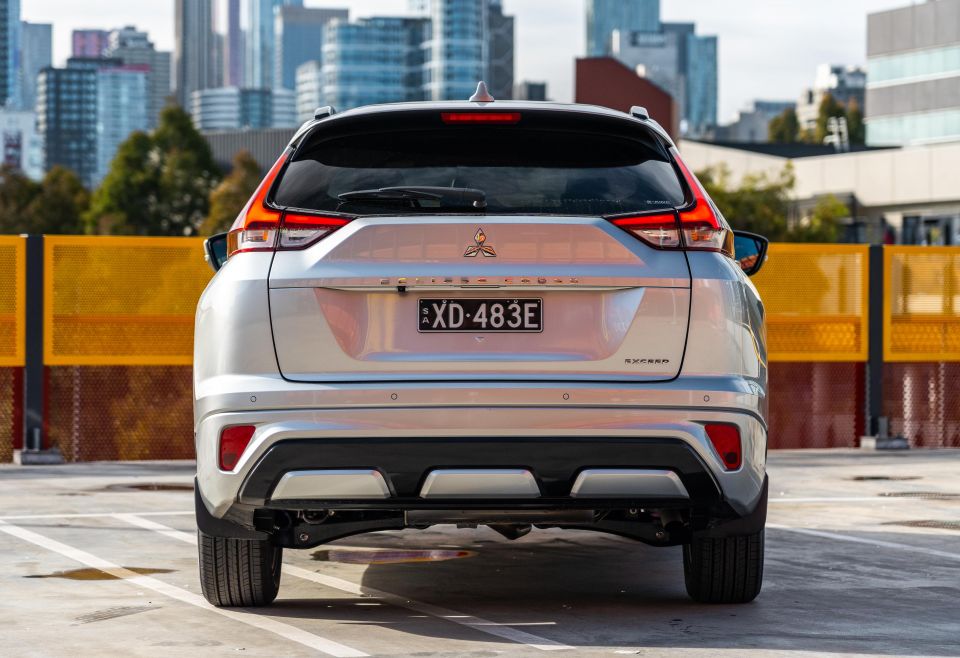
Mitsubishi Eclipse Cross pricing:
All prices are before on-road costs
Buy your new car without the stress. It's fast, simple and completely free.

Great service from Travis and team, second time I have used this business would not hesitate to recommend them to anyone
Craig C.
Purchased a Ford Ranger in Sunshine Coast, QLD
CarExpert helped Craig save thousands on his Ford Ranger, now let us save you on your next new car.
Find a dealHopping into the Mitsubishi Eclipse Cross, it does feel like you’ve stepped into a time capsule from around five years ago, despite the car being brand new.
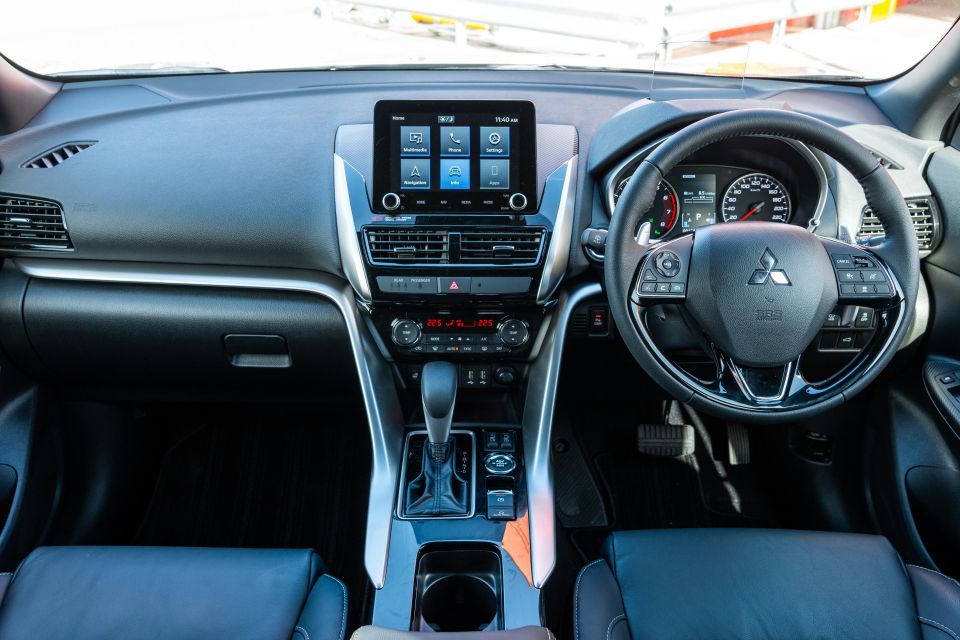
The top-specification Exceed variant on test here comes with leather upholstery that can be finished in either black or light grey. Our tester was equipped with the former, which I’d argue is the option to go for, as the light grey looks a little tacky in my opinion and will probably show signs of wear more quickly.
The front seats themselves are comfortable enough, with the seat-back offering adequate side bolstering. The seat-base; however, is a little too squishy and it can be hard to find a comfortable position.
The driver’s seat offers eight ways of electric adjustment, including thigh adjustment, which made me feel very supported. There isn’t any lumbar support, however.
The steering wheel is wrapped in hard and almost fake-feeling leather upholstery. There is also glossy piano black on the lower section of the steering wheel which got extremely grimy and heavily fingerprinted over the week I had the car.

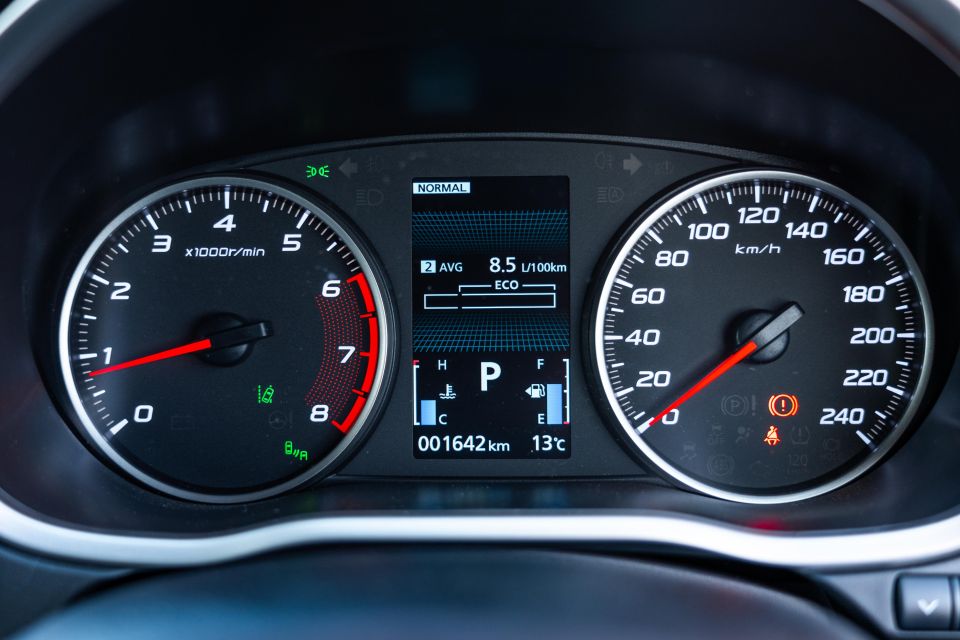
Piano black should really be banned from high-touch points in cars and it feels like Mitsubishi has done the opposite by putting it in a place where it’s likely to be touched every single time you drive the car.
The steering wheel is heated, which was a godsend in fickle Melbourne weather; although only the sides of the wheel are heated. It also didn’t warm up very much, either.
Behind the steering wheel are a set of crystal clear analogue dials for the revs and speedometer. These flank a small digital display. Despite this screen being able to display a range of different information, it’s not able to show your speed.
There’s a head-up display that projects information onto a hard piece of plastic, instead of the windscreen itself. It’s a little too close to the driver and also makes a noticeable buzzing noise when switched on.

Moving across the dash you find an 8.0-inch touchscreen infotainment system that has a satin finish – which means there are plenty of reflections. The touchscreen itself is also tilted a little too far back – which means it’s even harder to see.
The system itself has plenty of processing power and thus switches on quickly at start up and there is no stuttering when a new application is opened.
There are only wired forms of smartphone mirroring available in the Eclipse Cross. This isn’t necessarily a bad thing because my phone battery remained topped up when I used it.
I also didn’t experience any drop-outs of Apple CarPlay during my time with the tester – which is to be expected as wired smartphone mirroring is typically a lot more reliable than wireless forms.
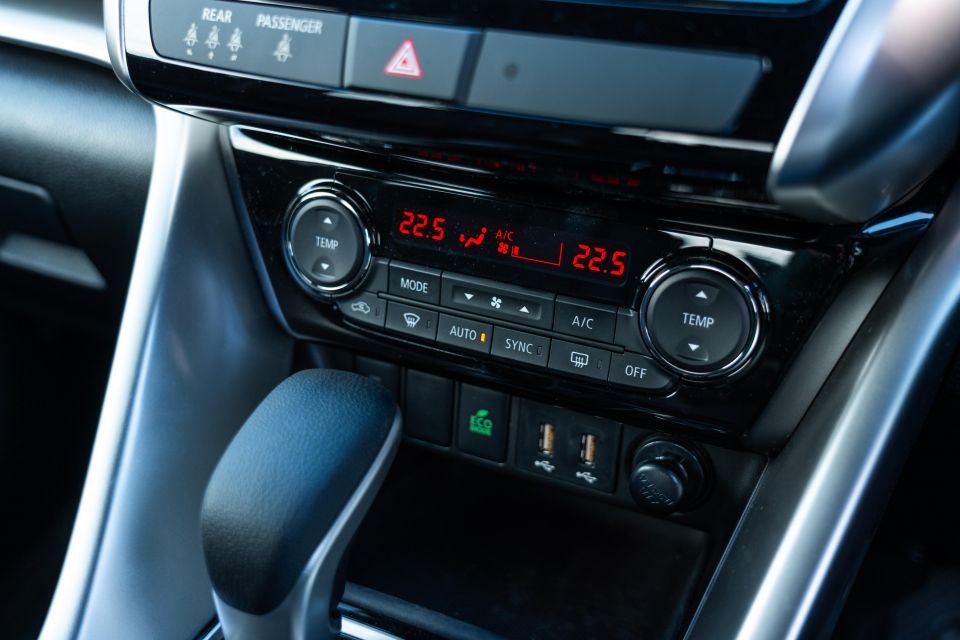
The Eclipse Cross comes with a built-in TomTom-based satellite navigation system – now that’s a throwback.
The satellite navigation is a little clunky to use at times but it eventually sorts its problems out. It’s for this reason I’d save the hassle and instead use Google Maps with smartphone mirroring instead.
Under the touchscreen infotainment system is a cluster of physical buttons for the dual-zone climate control. These buttons are very easy to understand and adjust but the red background lighting on the thin display looks a little dated.
On the centre console there are plenty of buttons and switches, as well as a wealth of piano black. The latter is really frustrating because although the car was virtually brand new, it already had scratches from being cleaned.
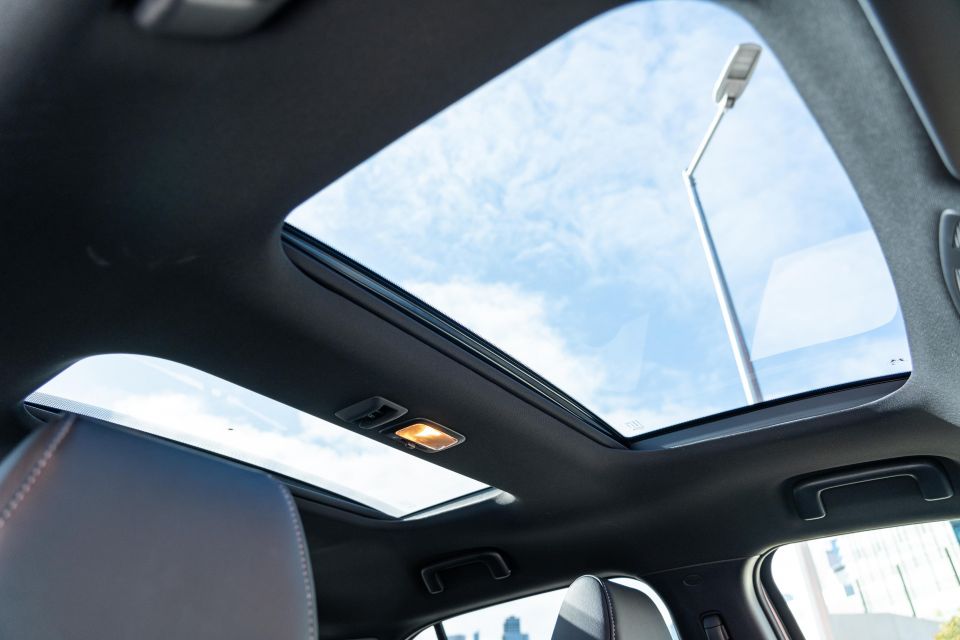
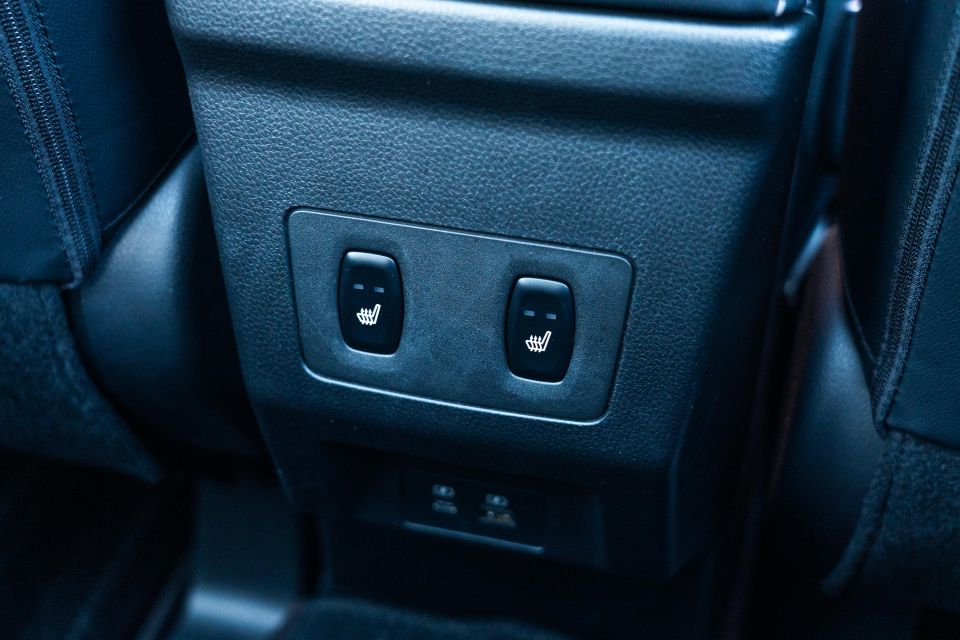
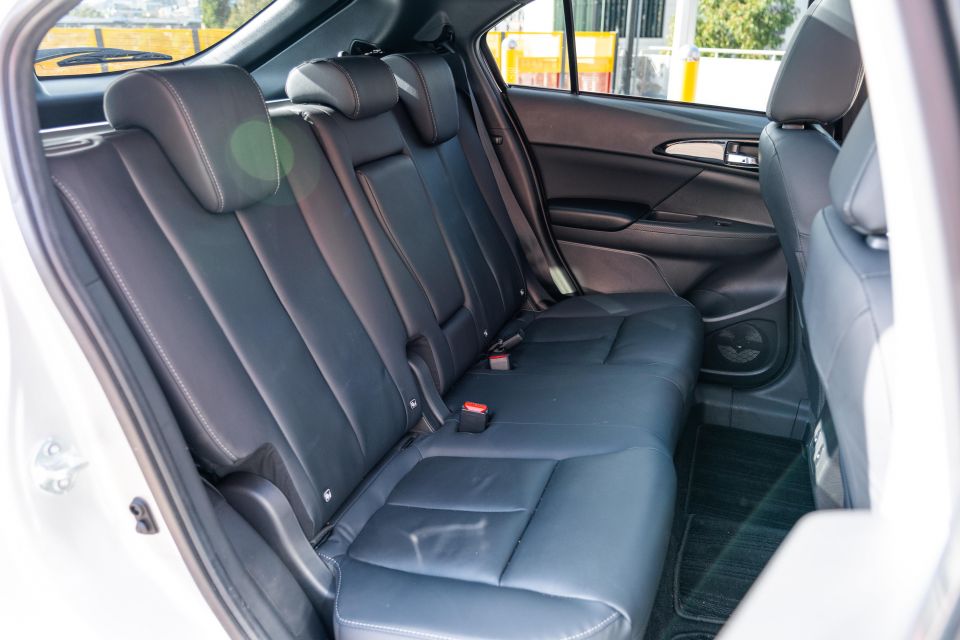
The top-spec Eclipse Cross Exceed comes with dual sunroofs that give the illusion of a panoramic sunroof. When the covers for both sunroofs are retracted a considerable amount of light is let into the cabin, which creates an airier ambience.
Moving to the second row there is plenty of head, shoulder, leg, and toe space. The seat itself isn’t quite as comfortable as the front two; although the backrest reclines a fair way, which means you’ll still be able to relax.
In terms of second-row amenities the two outboard seats are heated, there are centre console-mounted rear air vents, as well as a USB-A and USB-C port.
The Eclipse Cross Exceed comes standard with a hands-free power tailgate which of course is useful if you’ve got your hands full and need to open the boot.
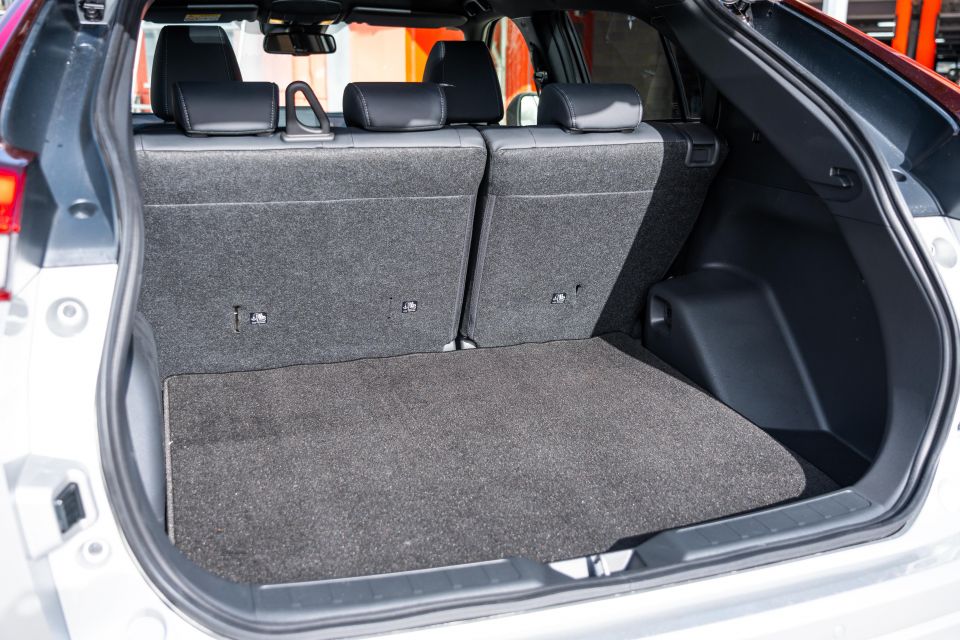
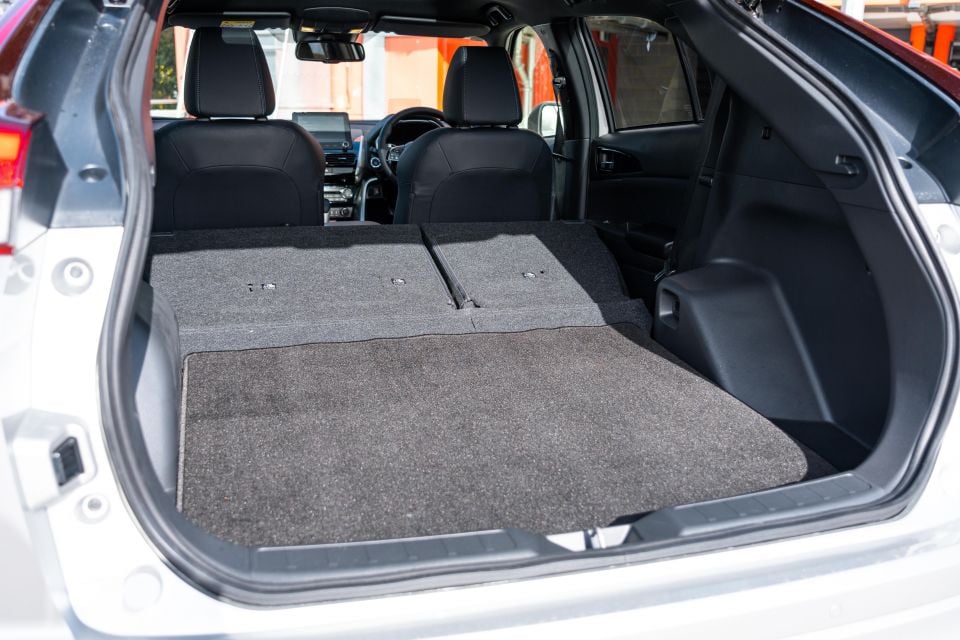
Once the powered tailgate opens it reveals 405 litres of boot capacity with the second row of seats upright. This space is adequate and line ball with a large number of its rivals. With the second row of seats folded down the boot capacity rises to 1172 litres.
There is a retractable cargo cover that comes as standard across the Eclipse Cross range. It’s a little flimsy; although, it does the job once you figure out how to use it properly.
Under the boot floor is a space-saver spare wheel. This isn’t quite as handy as a proper full-size spare wheel, but infinitely better than having nothing at all, like the Eclipse Cross PHEV.
The 2024 Mitsubishi Eclipse Cross is powered by a 1.5-litre turbocharged four-cylinder petrol engine producing 110kW of power and 250Nm of torque.
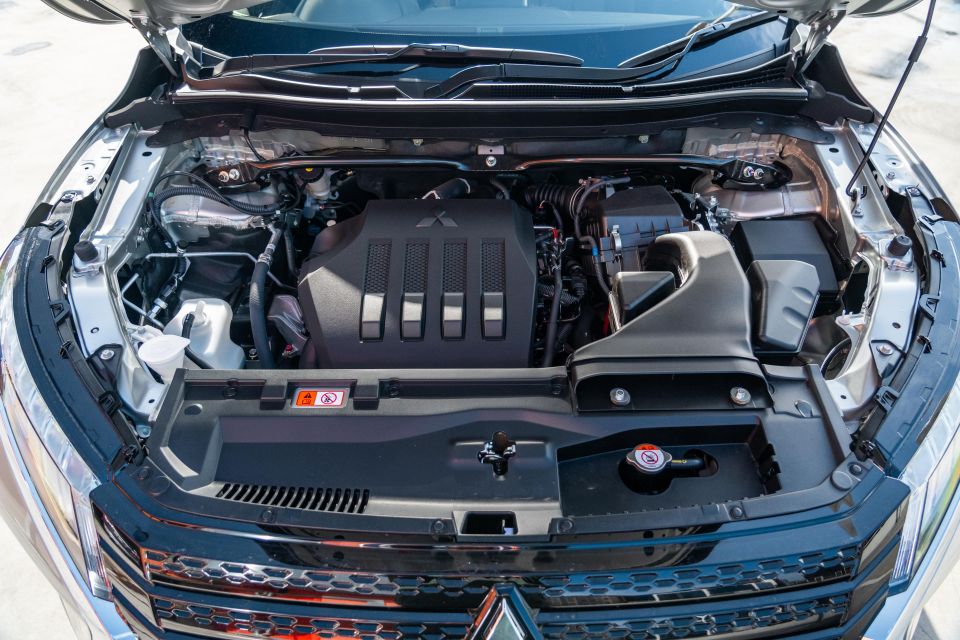
This is mated to a continuously variable transmission (CVT) with drive sent either to the front wheels or through an all-wheel drive system. Our tester was with equipped with the latter.
Mitsubishi claims the Eclipse Cross with the 1.5-litre turbo-petrol engine and all-wheel drive has a combined fuel consumption of 7.7 litres per 100km. Over 300km of mixed urban, metropolitan and highway driving, our tester consumed an average of 8.4 litres per 100km.
It has a 60-litre fuel tank and requires a minimum of 91 RON regular unleaded petrol.
The Eclipse Cross is also available with a plug-in hybrid (PHEV) powertrain that includes a 2.4-litre naturally aspirated four-cylinder petrol engine, an electric motor on each axle, and a 13.8kWh lithium-ion battery pack.
In this configuration the petrol engine produces 94kW and 199Nm, the front e-motor makes 60kW and 137Nm, and the rear motor makes 70kW and 195Nm. There’s no combined system output figure available. Drive in the PHEV is sent through an all-wheel drive system thanks to its electric motors.
Starting up the Eclipse Cross I’m presented with a number of familiar-sounding ‘bings’ and ‘bongs’ – my grandparents’ 2009 Mitsubishi Lancer makes the exact same sounds upon startup for reference.
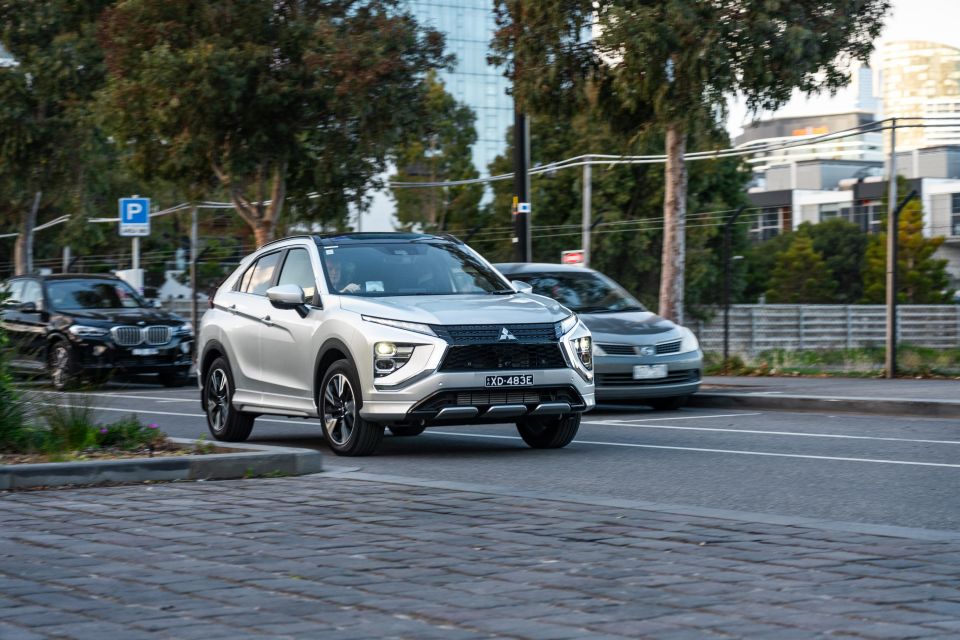
As you get moving the acceleration is adequate but you definitely won’t be winning any races at the lights. This is despite the fact the 1.5-litre turbocharged four-cylinder engine produces 110kW and 250Nm.
If you push the accelerator a bit harder this doesn’t necessarily translate to quicker acceleration. Instead there’s a lot more engine noise and revving. This is when the Eclipse Cross’ continuously variable transmission (CVT) is at its worst as the engine revs just hang awkwardly high.
It’s obvious the engine doesn’t like to be pushed hard and feels more comfortable with docile throttle applications.
Even if you’re lighter on the throttle the acceleration can still feel a little disjointed. This is because the CVT goes through steps that artificially simulate regular gears like a standard automatic transmission.

A number of other vehicles with CVTs also have artificial steps, but the Eclipse Cross’ are more grating and try to keep the revs down as low as possible to maximise fuel efficiency.
Combining all of these points, the Eclipse Cross feels a little lifeless but it gets you where you need to go.
When parking the steering wheel is incredibly easy to fling around from lock to lock. This makes manoeuvring in tight urban carparks a lot easier. There’s also a surround-view camera to assist; although, the resolution isn’t anything to phone home about.
On the other hand once you get moving the steering is still really light, which makes it feel a little devoid of feeling. It doesn’t feel like the steering wheel and your driving wheels are always on the same page.
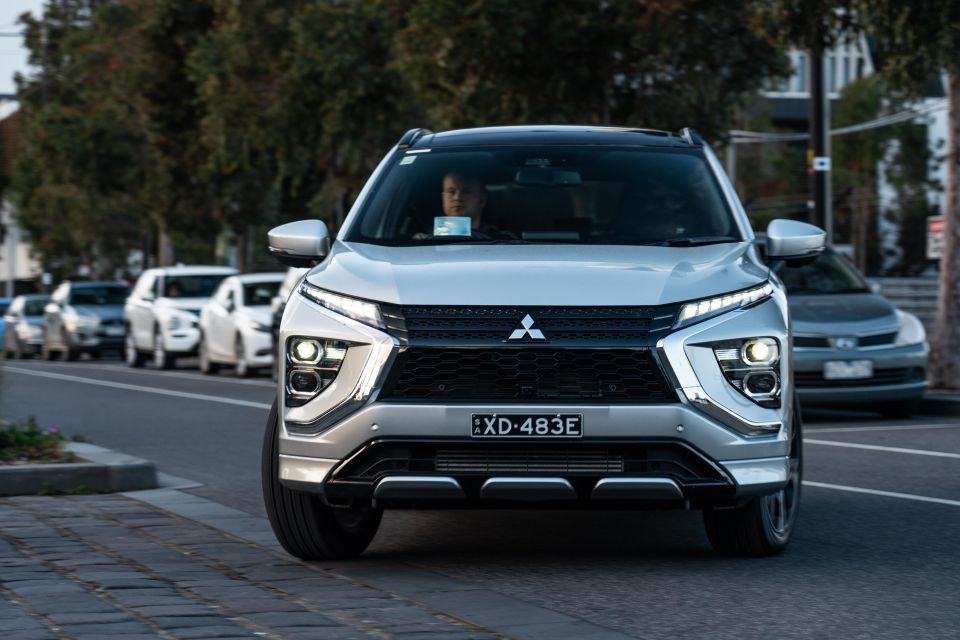
Where expert car reviews meet expert car buying – CarExpert gives you trusted advice, personalised service and real savings on your next new car.
Around town the Eclipse Cross has a really compliant ride, soaking up all the pimply metropolitan roads. It also takes all forms of speed bumps in its stride.
Dialling up the speed is gradual as it feels like the engine doesn’t have a lot more to give. Expect a lot of revs if you want to quickly accelerate up to highway speeds.
Once you reach your desired speed the Eclipse Cross does get into a groove and become a really comfortable cruiser. The revs are kept down low even at highway speeds and the suspension is still really compliant.
Despite this, there was a fair bit of wind noise emanating from the sunroofs, as well as the side mirrors.
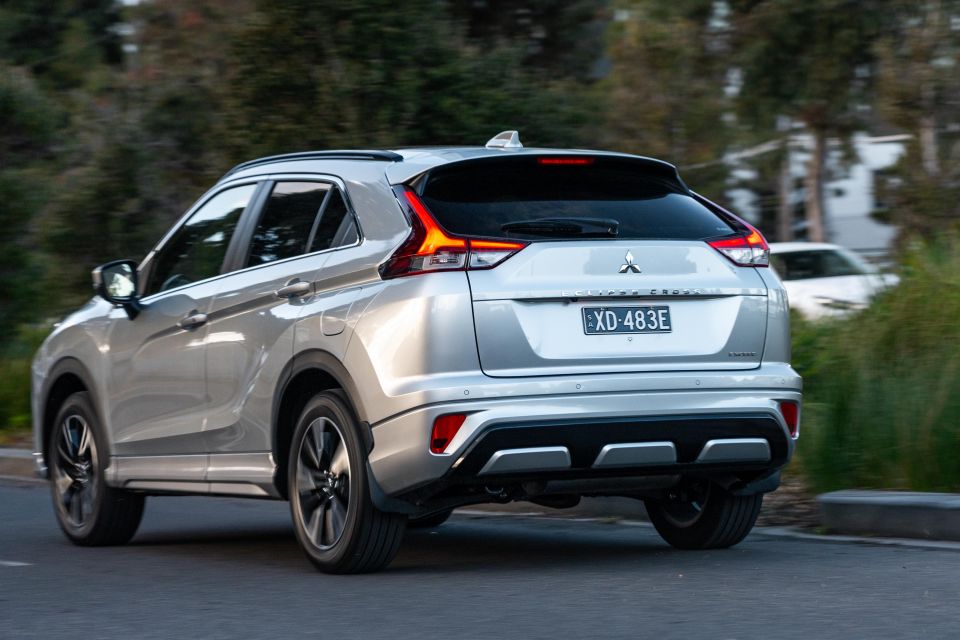
Although the steering felt really light at low speeds it became artificially heavier at higher speeds. I don’t like how it goes from one extreme to another as it doesn’t create a cohesive driving experience.
On the safety front the Eclipse Cross’ adaptive cruise control system is very natural in the way it reacts to cars pulling in front of you. It doesn’t automatically slam on the brakes like adaptive cruise control systems in some other cars.
The lane-keep assist works fine and isn’t too intrusive when it goes off. There’s no form of lane-centring like the newer Outlander now receives.
The last thing I’ll mention in this section is the Eclipse Cross Exceed’s LED headlights are fantastic. It’s unfortunate you need to step all the way up to the top-specification non-PHEV variant to receive them as they are so handy in rural and regional areas where animals could be lurking in the shadows.
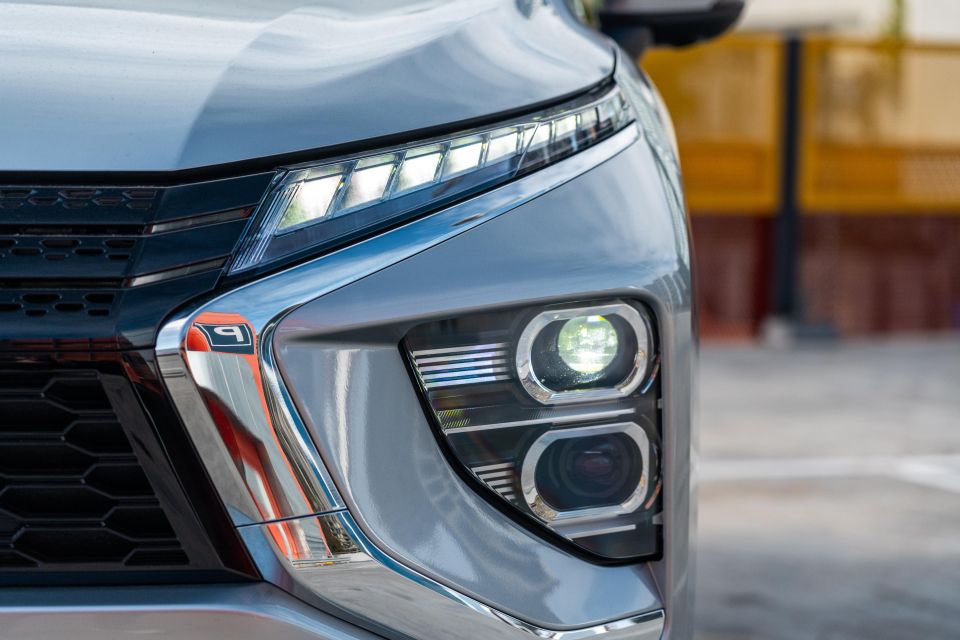



Eclipse Cross ES highlights:
Eclipse Cross LS adds:
Eclipse Cross LS Black Edition adds:
Eclipse Cross Aspire gains (over LS):
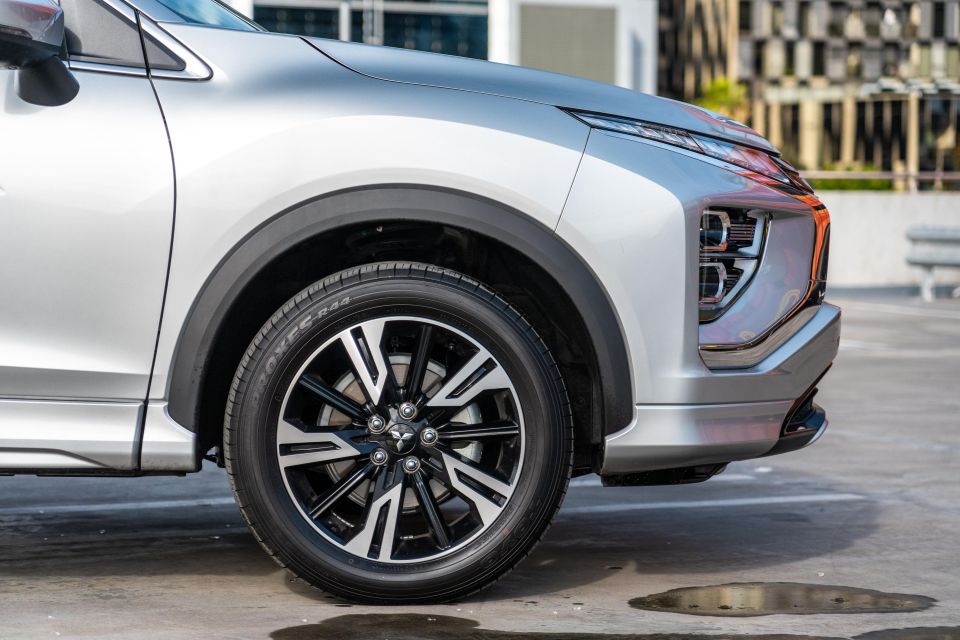

Eclipse Cross Exceed adds:
The Mitsubishi Eclipse Cross has a five-star ANCAP safety rating based on testing conducted in 2017.
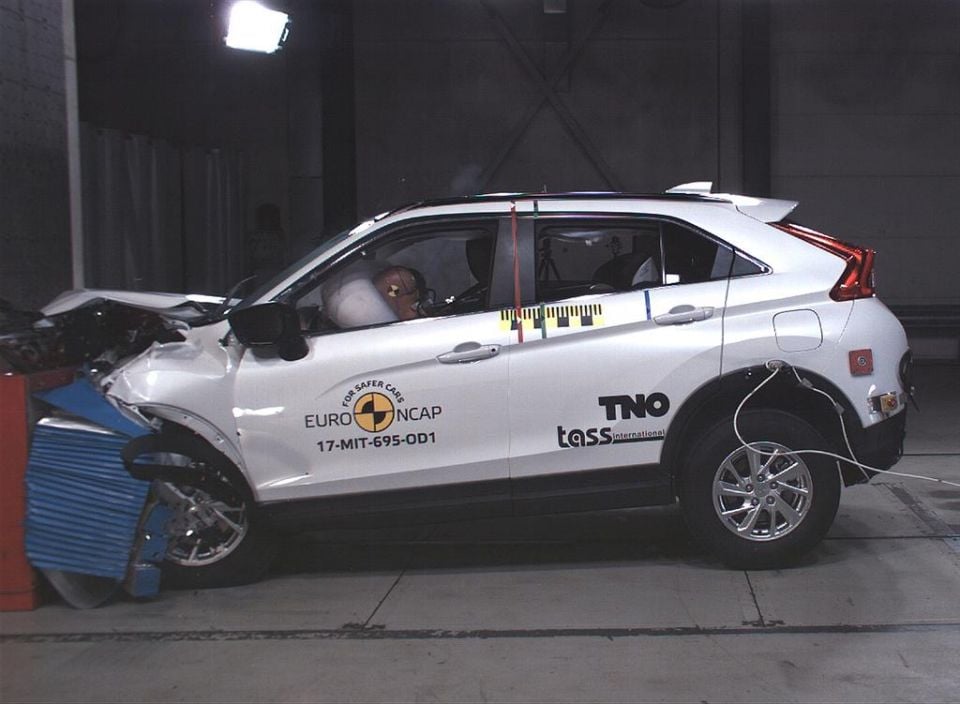
It received an adult occupant protection score of 97 per cent, child occupant protection score of 78 per cent, vulnerable road user protection score of 80 per cent and a safety assist score of 58 per cent.
All models come standard with the following:
The LS and above gain blind-spot monitoring, lane-departure warning and rear cross-traffic alert, while the Aspire gains adaptive cruise control, front parking sensors and a surround-view camera; while the Exceed adds Mitsubishi’s Ultrasonic Misacceleration Mitigation System.
If you service your Eclipse Cross within the Mitsubishi dealer network, the five-year, 100,000km warranty is increased to 10 years and 200,000km.
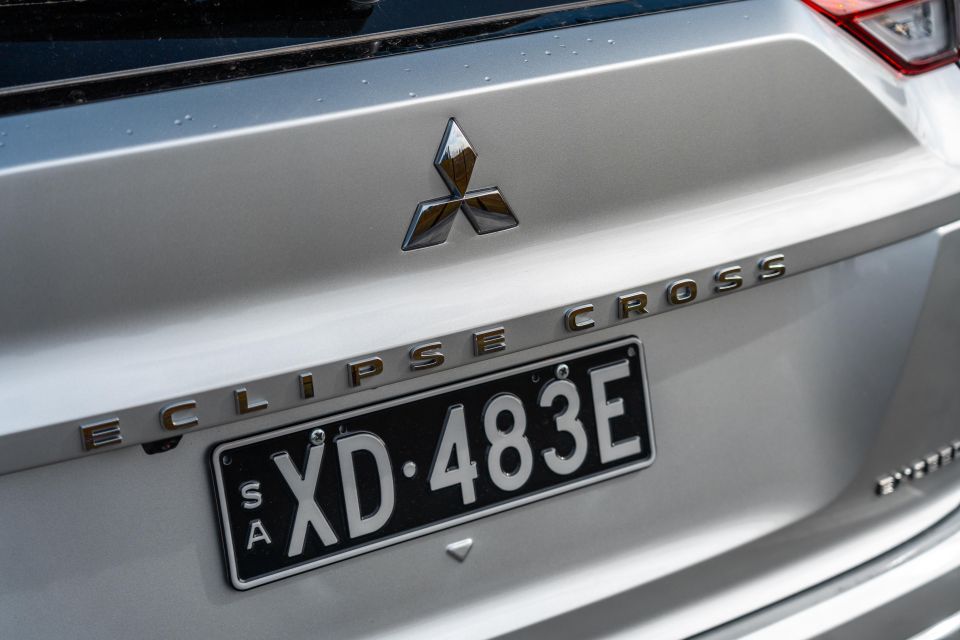
The 2024 Mitsubishi Eclipse Cross range requires servicing every 12 months or 15,000km, whichever comes first.
Mitsubishi also offers 10 years of capped-price servicing, which is priced as follows:
| 1 | 2 | 3 | 4 | 5 | 6 | 7 | 8 | 9 | 10 |
|---|---|---|---|---|---|---|---|---|---|
| $299 | $399 | $399 | $399 | $399 | $699 | $499 | $499 | $499 | $699 |
That’s a total of $4740 over 10 years.
The Mitsubishi Eclipse Cross is the car that seemed to be the replacement for the ageing ASX but never properly took its place.
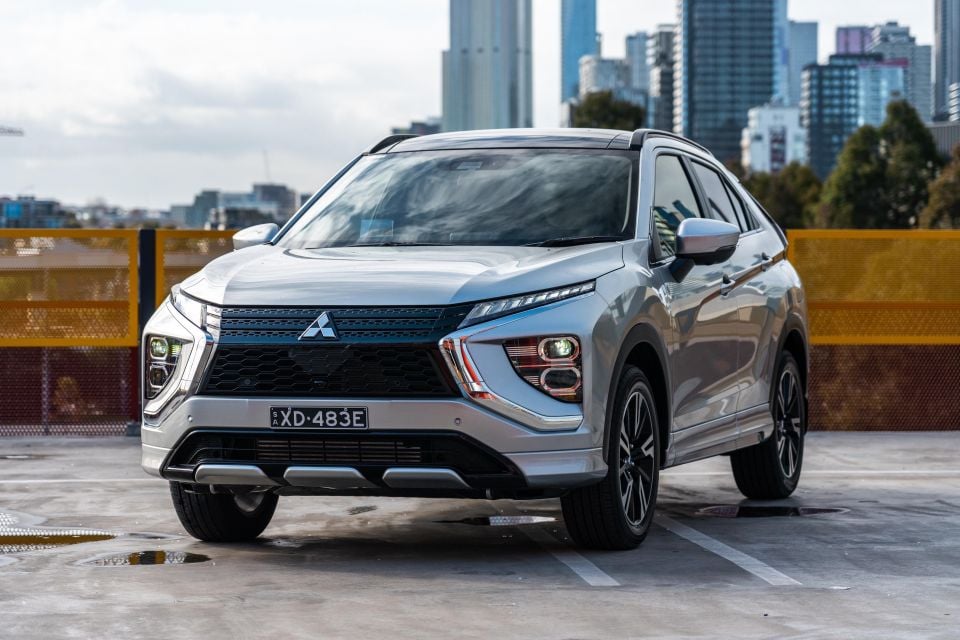
Instead, this small SUV becomes a bit of an anomaly. If you’re wanting to stick within the Mitsubishi family and you’re looking for an affordable SUV you’d still go for the ASX, and if you want something newer and a little larger you likely wouldn’t go past the Outlander.
Although the Eclipse Cross is considerably newer than the ASX its interior is still very dated. All the newer convenience and safety features appear to be tacked on as buttons that proliferate in the interior.
The regular 1.5-litre turbo-petrol engine is completely adequate, but it seems to suck a lot of the life out of the Eclipse Cross. This is disappointing because on paper its outputs are generous within the segment.
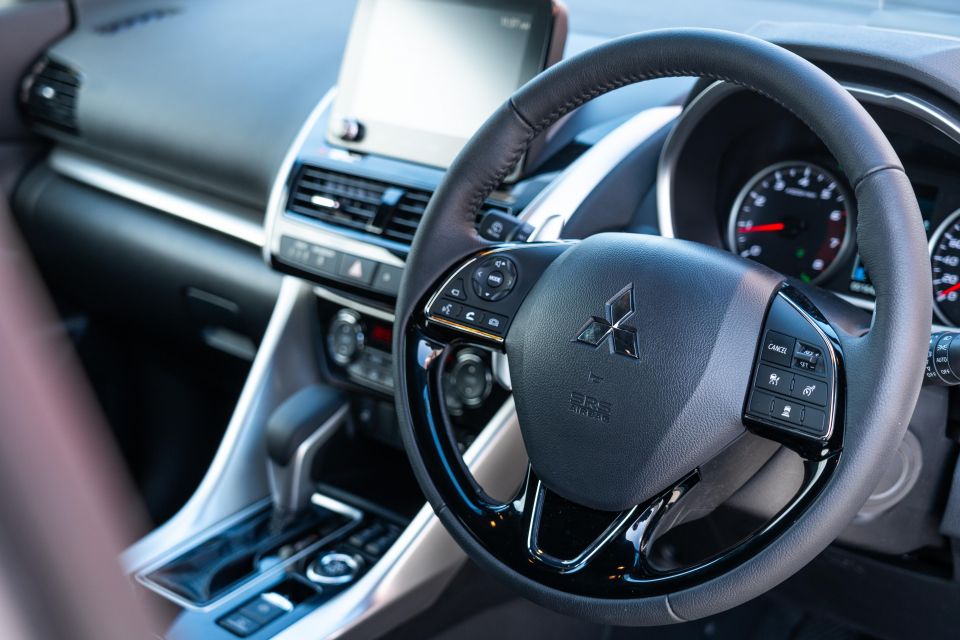
Despite my gripes, the Eclipse Cross can’t be completely written off as Mitsubishi offers one of the longest warranty programs in Australia at the moment. Sure you need to service the car at a Mitsubishi dealer, but 10 years is a long time to guarantee a brand-new car.
If you’re absolutely dead-set on getting an Eclipse Cross the top-specification Exceed forms as the pick of the range as it’s fully loaded and receives all the safety equipment available.
I’d also suggest you take a look and test drive a number of the Eclipse Cross’ rivals.
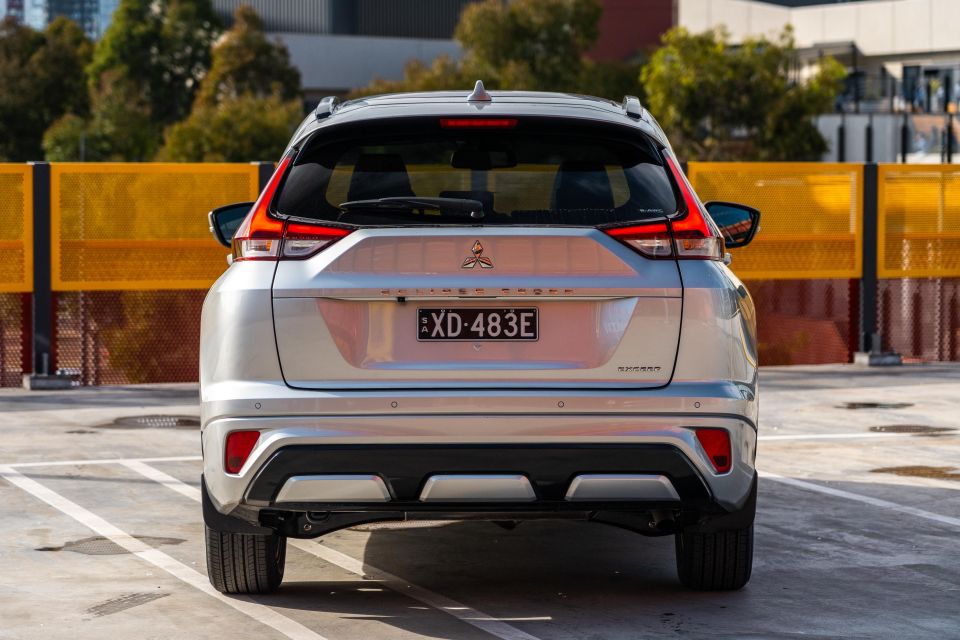
Click the images for the full gallery
BUY: Mitsubishi Eclipse Cross MORE: Everything Mitsubishi Eclipse Cross
Where expert car reviews meet expert car buying – CarExpert gives you trusted advice, personalised service and real savings on your next new car.
Jack Quick is an automotive journalist based in Melbourne. Jack studied journalism and photography at Deakin University in Burwood, and previously represented the university in dance nationally. In his spare time, he loves to pump Charli XCX and play a bit of Grand Theft Auto. He’s also the proud owner of a blue, manual 2020 Suzuki Jimny.


Ben Zachariah
6 Hours Ago


CarExpert.com.au
14 Hours Ago


Damion Smy
1 Day Ago


Damion Smy
1 Day Ago


Damion Smy
1 Day Ago


Damion Smy
1 Day Ago